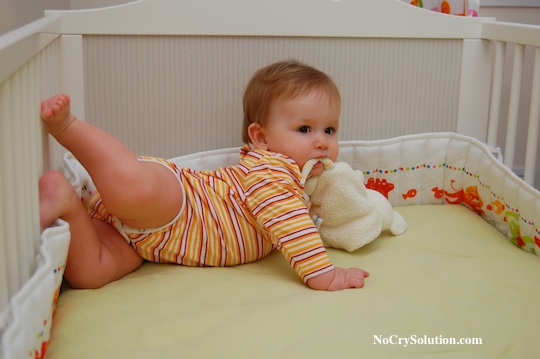
Ever try convincing a wide-awake child to go to bed? Not an easy task! Instead of bedtime battles, you can work with your child’s natural body clock so that he’s actually tired when his bedtime arrives. Did anyone ever tell you, “You can’t make a child sleep, but you can make him go to bed.”
This is true enough, but this theory creates chaos in the house when said child is jumping on the bed, playing in the bed, popping out of the bed and generally doing everything in the bed but sleeping! The missing link here is actually having him be tired enough to lie on the bed and . . . go to sleep.
How Sleepiness is Regulated
Several brain processes regulate wakefulness and sleepiness. The first is a factor of how long we’ve been awake. If a child is awake long enough, he’ll eventually become tired. This is why a late-afternoon nap can destroy the idea of an early bedtime. The second regulating factor is light and darkness. Bright light stimulates and energizes, while darkness brings on feelings of relaxation and tiredness.
Morning Light
Bright morning light provokes the release of your child’s wakefulness hormones. Exposing your child to morning light is like pushing a “go” button in her brain — one that says, “Time to wake up and be active.” So expose your child to bright light first thing in the morning. Daylight is most powerful; set up your child’s breakfast, morning cuddle or the wake-up breastfeeding in a room with windows. If you don’t have such a room, or if the morning is dark outside, start your child’s day in a well-lit area of the house.
The Dark of Night
As much as bright light is the biological “go” button, darkness is the “stop” button. Darkness causes an increase in the release of melatonin, the body’s natural sleep hormone. You can help align your child’s sleepiness with his bedtime by dimming the lights in your home during the hour or so before bedtime. When your child wakes during the night even the smallest amount of light can actually push her “go” button. Be careful about nightlights, bathroom lights, or opening the refrigerator door and flooding the room with light – this can accidentally signal morning’s arrival. Incidental lights can affect your child’s sleep, too. A streetlight outside his window, car lights flickering past, or the neighbor’s kitchen lights coming through his window can call out to a sleeping child, waking him in the night or earlier in the morning than you’d like. Do what you can to prevent light from entering your child’s room. Use light-blocking curtains or shades, or cut cardboard boxes to fit inside windows.
Slow Down the Action!
Even if the lights are dim, you’ll find that noise and action can override the light/dark-regulated biological need for sleep. In other words, if the lights are dim, but the television is loud and your child is racing around the room with her siblings, then her brain will override that “stop” button. She’ll become alert – often hyper alert, since she’ll be forcing herself to stay awake despite an inner voice that’s calling her to sleep.
The key is to keep the hour pre-bedtime as peaceful as possible:
-
- Turn the TV off, or keep the volume low and the picture dimmed, and avoid loud, stimulating programs
- Turn the radio to soothing, relaxing tunes
- Keep video, computer, and electronic games turned off
- Direct playtime toward the quiet and restful
- Prevent your child from engaging in physically active play
- Avoid scheduling social events, running errands, or entertaining during the hour before bedtime when possible
Need more tips? The No-Cry Sleep Solution for Toddlers and Preschoolers is full of gentle ways to to stop bedtime battles and improve your child's sleep.




























Comments
I'm definitely going to start
I'm definitely going to start following these pre-bedtime bullet points with our little boy! He has been having a really hard time going to bed since I started working again and I think establishing a good routine will really help him.
You should definitely try
You should definitely try these things! These things really helped my wife and I when our kids were younger!
Our toddler was always
Our toddler was always completely wide awake when it was bedtime so we started doing daily exercise activities about 1 1/2 hours before bed and it definitely helped him release all his energy and have time to settle down.